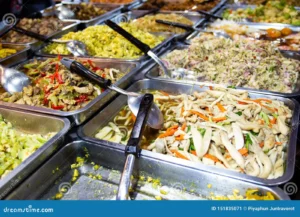Navigating Cottage food laws legal guidelines to correctly promote Your homemade treats Cottage food operations permit many meals entrepreneurs to pursue their ardor from domestic. However, the specific regulations in each state can pose challenges.
This guide breaks down the current cottage food landscape in the USA and shares workarounds to help monetize your creations.

Understanding the Basics of Cottage Food Laws
Cottage food laws aim to balance food safety with supporting small businesses. But the rules differ vastly between states.
Table 1 summarizes some common provisions:
| Category | Typical Restrictions |
| Allowed Foods | Non hazardous items like baked goods, candy, dried herbs. |
| Income Limit | Yearly sales under $50,000 or limited to in state customers. |
| Distribution Methods | Direct to consumers only no restaurants or retailers. |
| Licensing/Permits | Notification or permit required inspections vary. |
For example, while Minnesota limits income to $18,000, neighboring Wisconsin has no earning caps. Food classifications also differ some states allow jams but others don’t. Keeping up with regulation changes requires researching your states department of agriculture.
Selling Directly to Customers
The best way to tap into local demand within cottage food laws is farmers’ markets. Most require a permit as a “food establishment” but no commercial kitchen. Products are subject to requirements on labeling, ingredients and food handling.
The case study of Amanda highlights how farmers markets drove her baking business to peak at $40,000 annually within five years.
Private chefs preparing large scale meals can also partner with cottage food producers to source homemade ingredients and reduce event costs.
Quotes from caterers stress the value of these relationships . “Working with local bakers and preservers allows my small business to offer unique Made in [State] menus within budget.”

Working With Local Retail Partners
While direct sales are key, partnering with stores opens a new customer base. Many grocers will carry certain cottage foods like baked goods, asking for a simple Letter of Guarantee. Others run community supported agriculture (CSA) programs and include “get cottage food” options in subscriptions.
Bolded terms like Letter of Guarantee and CSA may need explaining for readers unfamiliar.

Leveraging Alternative Revenue Streams
Beyond direct food sales consider monetizing your expertise. Launching a Pay It Forward style recipe site, where readers can donate if they choose, introduces your talents without violating regulations.
You could also sell books with favorite recipes or conduct online or in person cooking tutorials. This diversifies income and builds an audience even for those restricted to small scale baking.

Resources for Support and Reform
National organizations like the Cottage Food Industry Association advocate for cottage food producers and provide updates on policy changes. Individual states also offer guidance the California Cottage Food Operations Handbook contains in depth program information.
For reform, following petitions from producers positively impacted by temporary pandemic rule relaxations, some states are now considering legislative bills to reform antiquated laws.
Getting involved through these avenues can help reshape regulations to better serve small food businesses in the long run.

Frequently Asked Questions
How to get a cottage food permit in Florida?
Cottage food operations require no license or permit from the Florida Department of Agriculture and Consumer Services (FDACS).
What cottage food sells best?
Some of the best selling cottage foods are baked goods such as cakes, cookies, pies, and breads.
Can I sell cottage food online in California?
With a Class A permit, you are allowed to sell your products directly to customers, such as online or in person at farmer’s markets and bake sales.
Conclusion Of Cottage Food Laws
By understanding the cottage food model and thinking creatively, food entrepreneurs have options to monetize their passion within the law or push for revisions expanding opportunities.
With strategic planning around direct sales, partnerships and alternative revenue, producers of homemade treats can find ways to share their gifts while respecting each state’s framework for ensuring food safety.











